Abstract
Fifteen consecutive patients with toxic epidermal necrolysis or the Stevens-Johnson syndrome managed without corticosteroids after transfer to the burn center (group 2) are compared to a previous consecutive group of 15 who received high doses of these drugs (group 1). Group 2 had a 66% survival, which was a significant improvement compared to the 33% survival in group 1 (p = 0.057). In group 1, mortality was associated with loss of more than 50% of the body surface area skin. In group 2, mortality was related to advanced age and associated diseases. Age, extent of skin loss, progression of skin loss after burn center admission, incidence of abnormal liver function tests, and the incidence of septic complications were not significantly different in the two groups (p greater than 0.10). The incidence of detected esophageal slough was similar in both groups. Nonsteroid (group 2) management was associated with a decreased incidence of ulceration of gastrointestinal columnar epithelium, Candida sepsis, and an increased survival after septic complications. The combined experience of these 30 patients suggests that corticosteroids are contraindicated in the burn center management of toxic epidermal necrolysis and the Stevens-Johnson syndrome.
Full text
PDF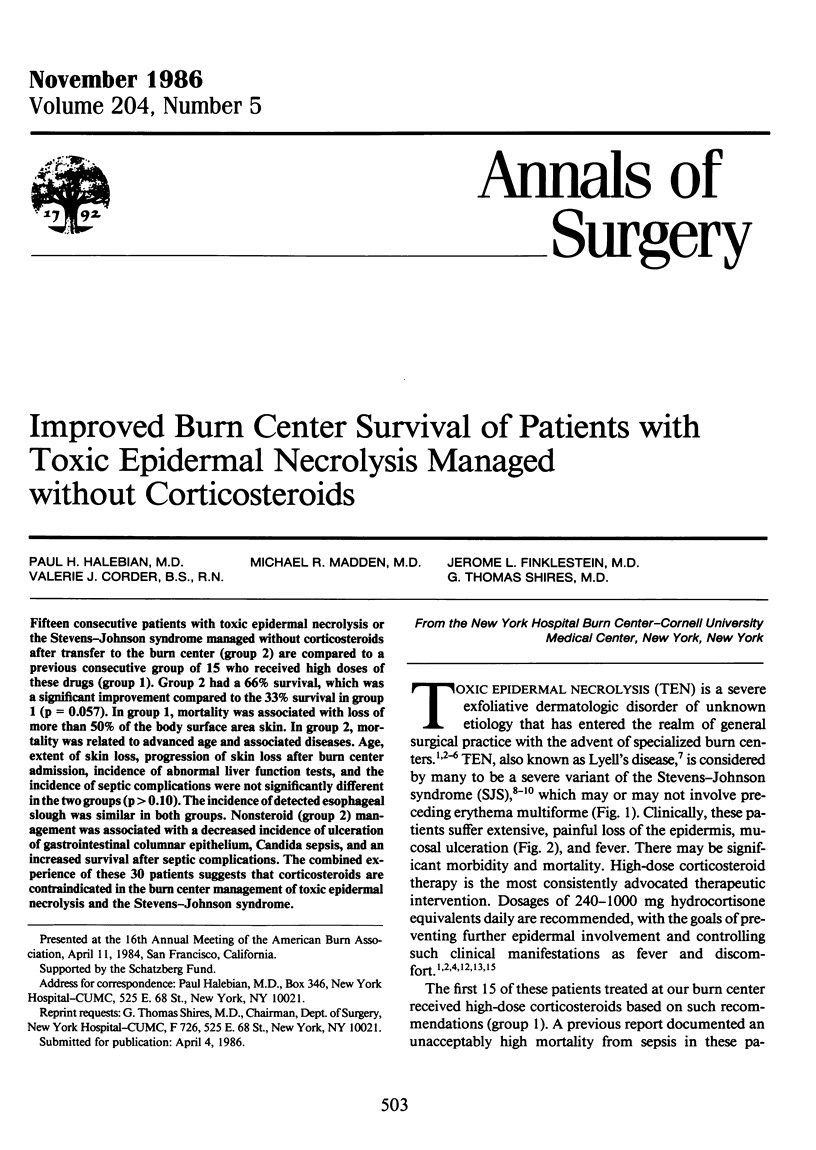
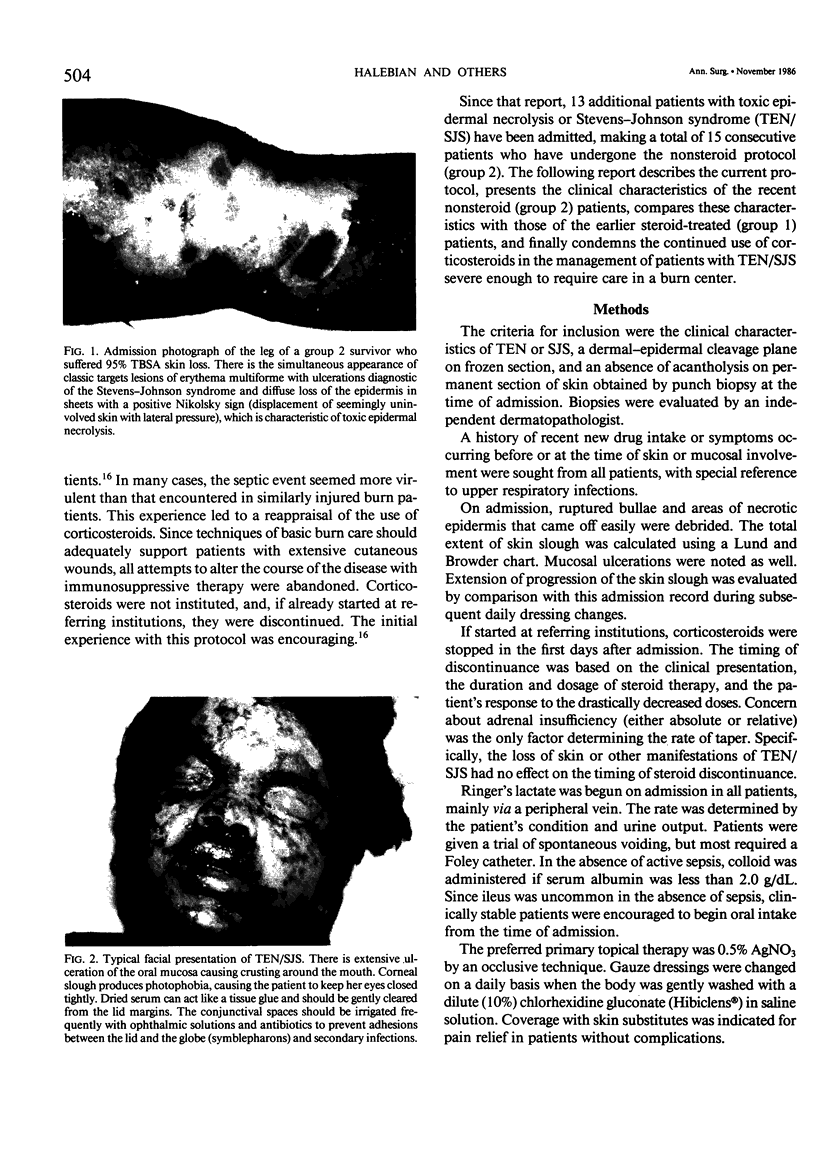
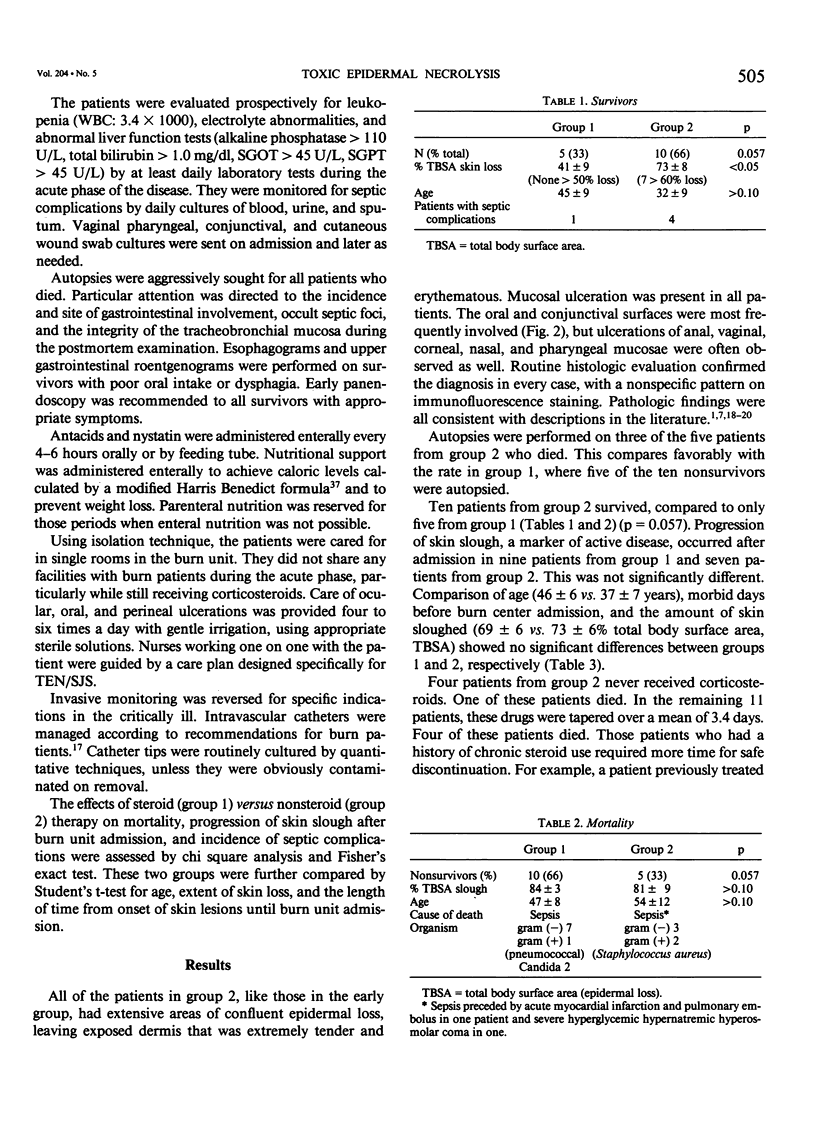
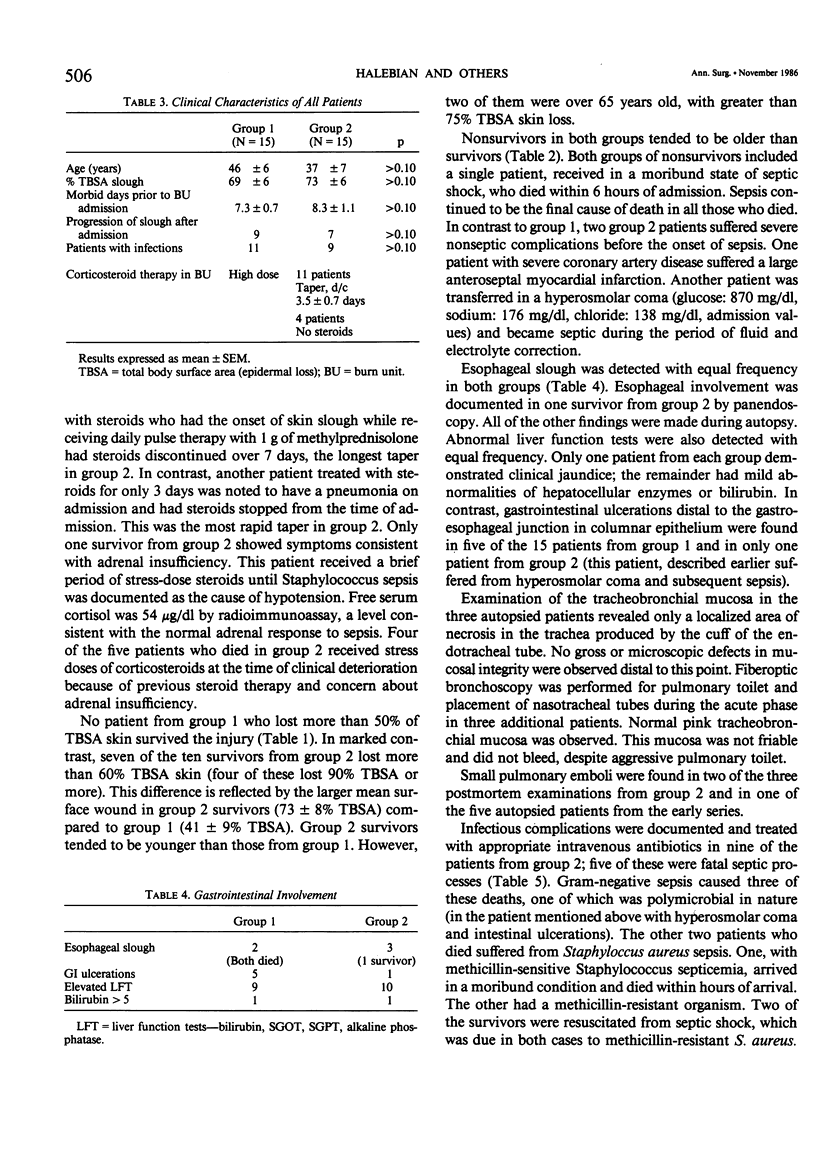
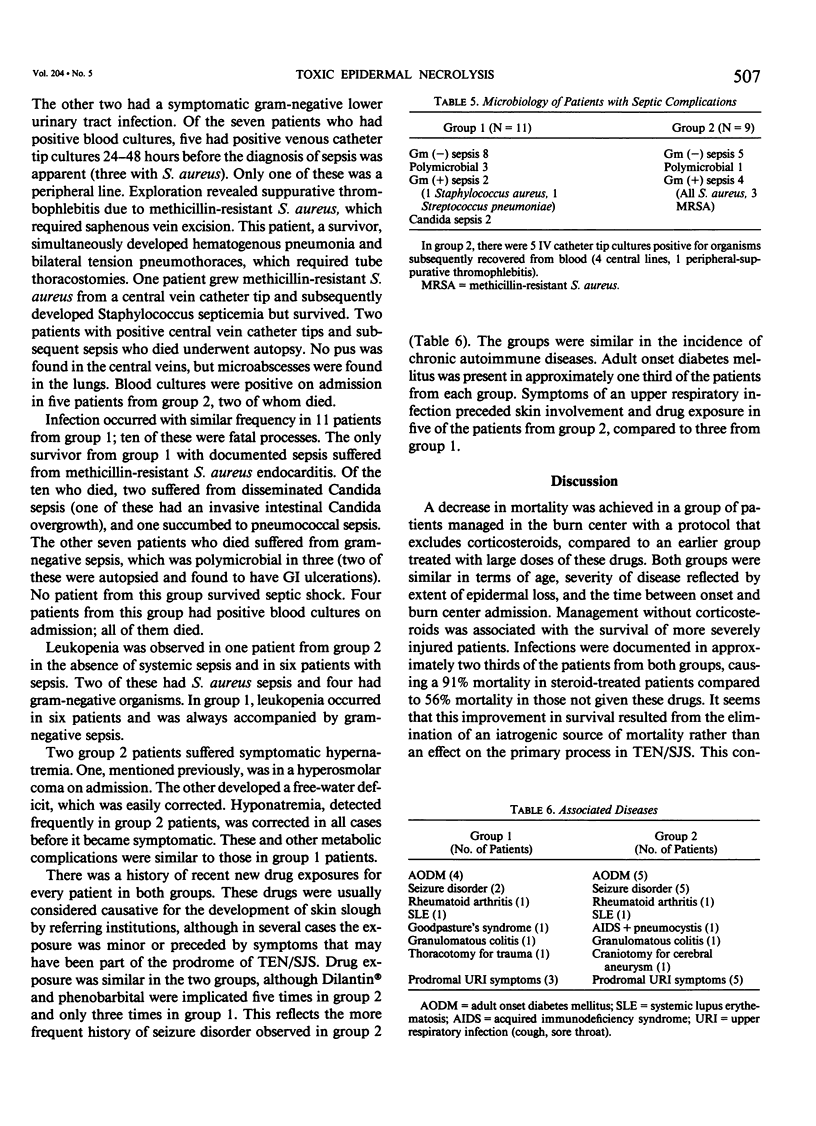
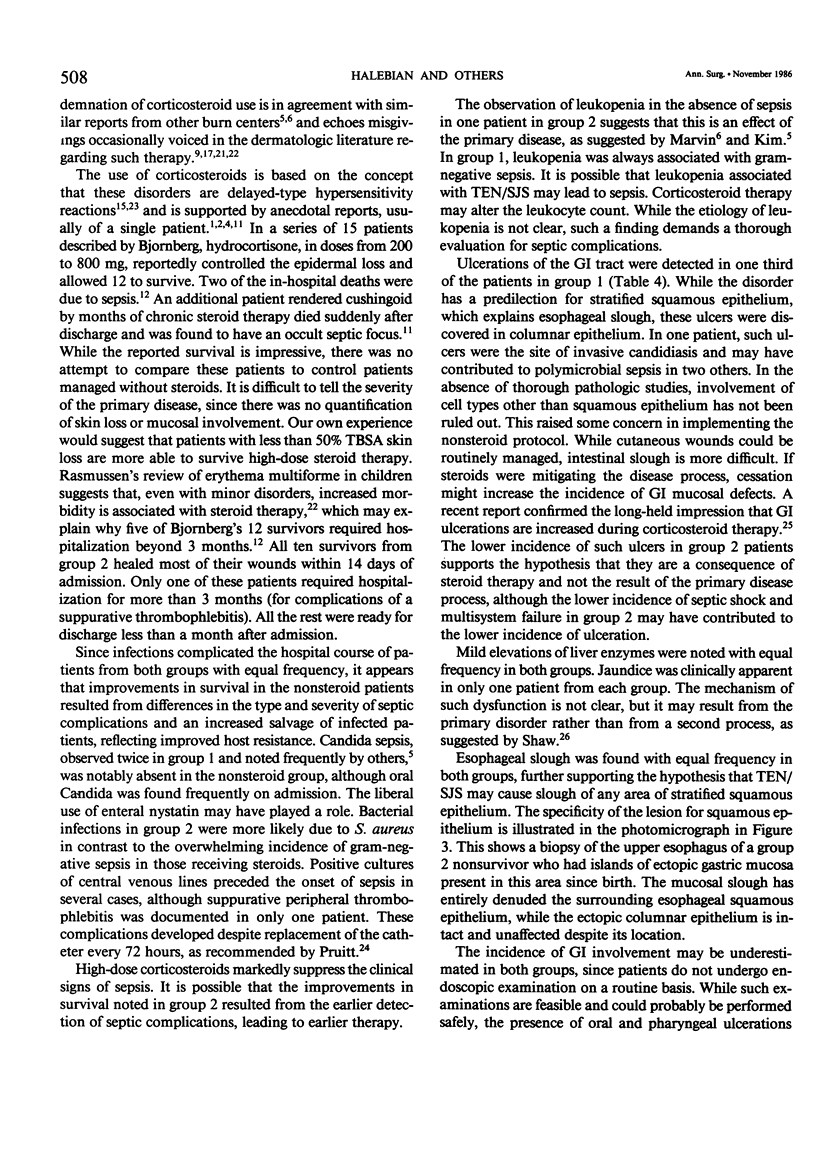
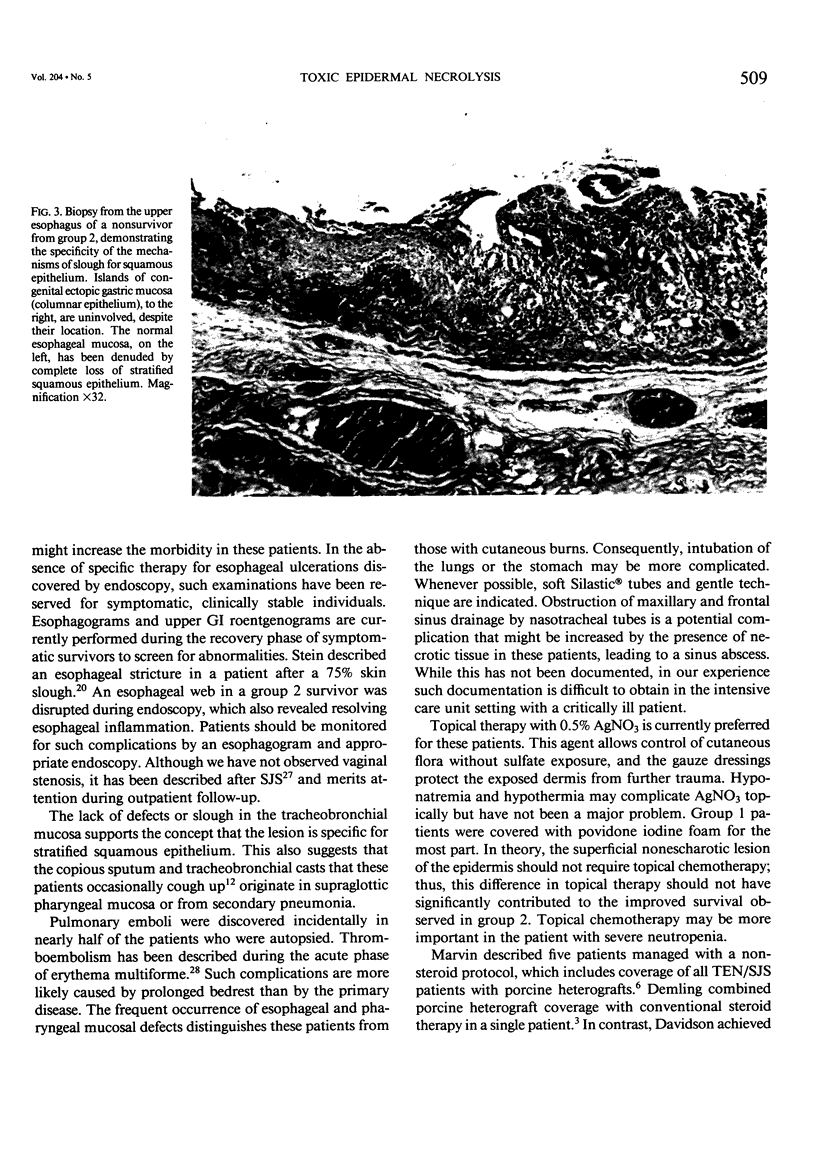
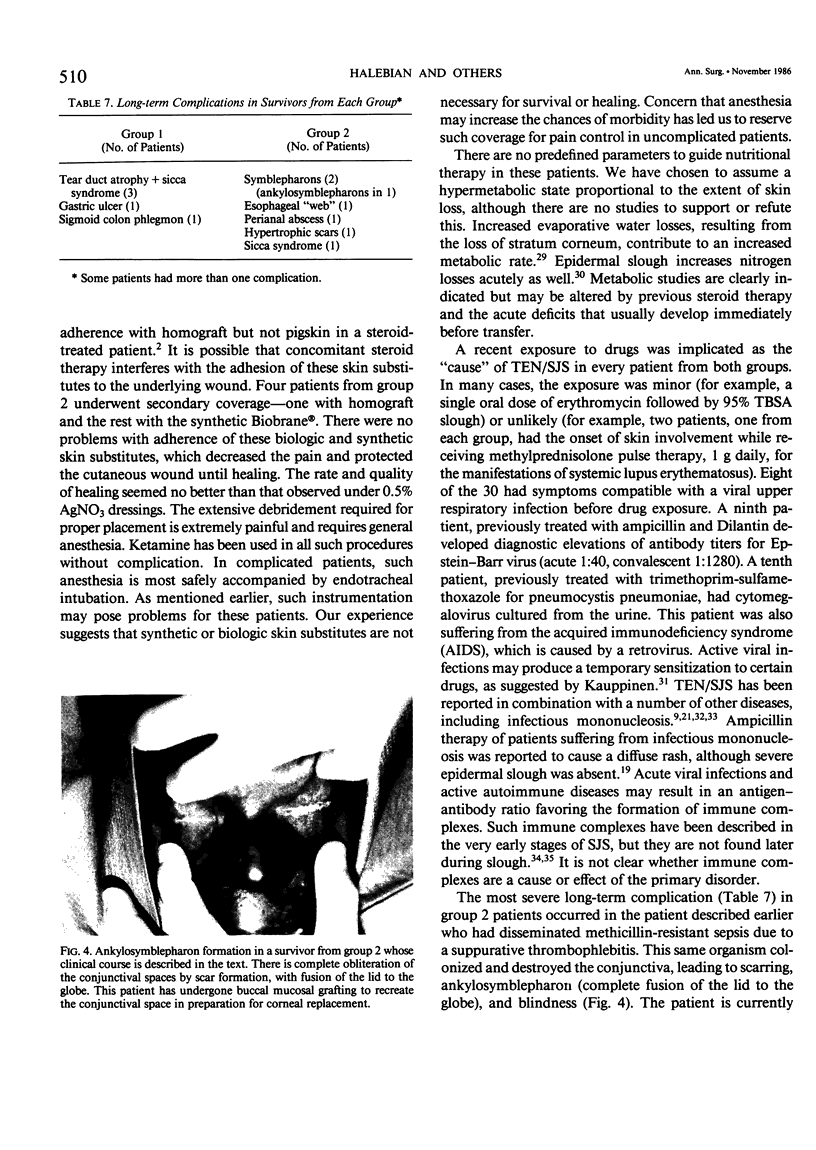
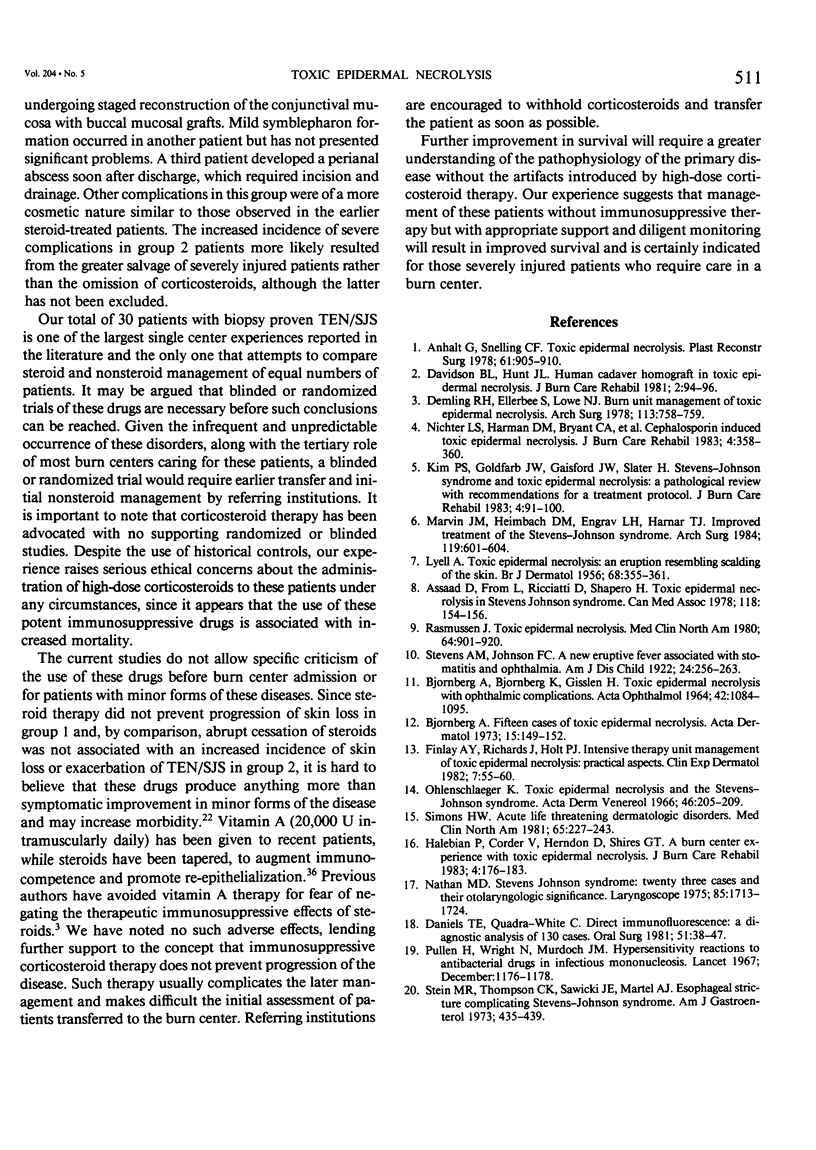
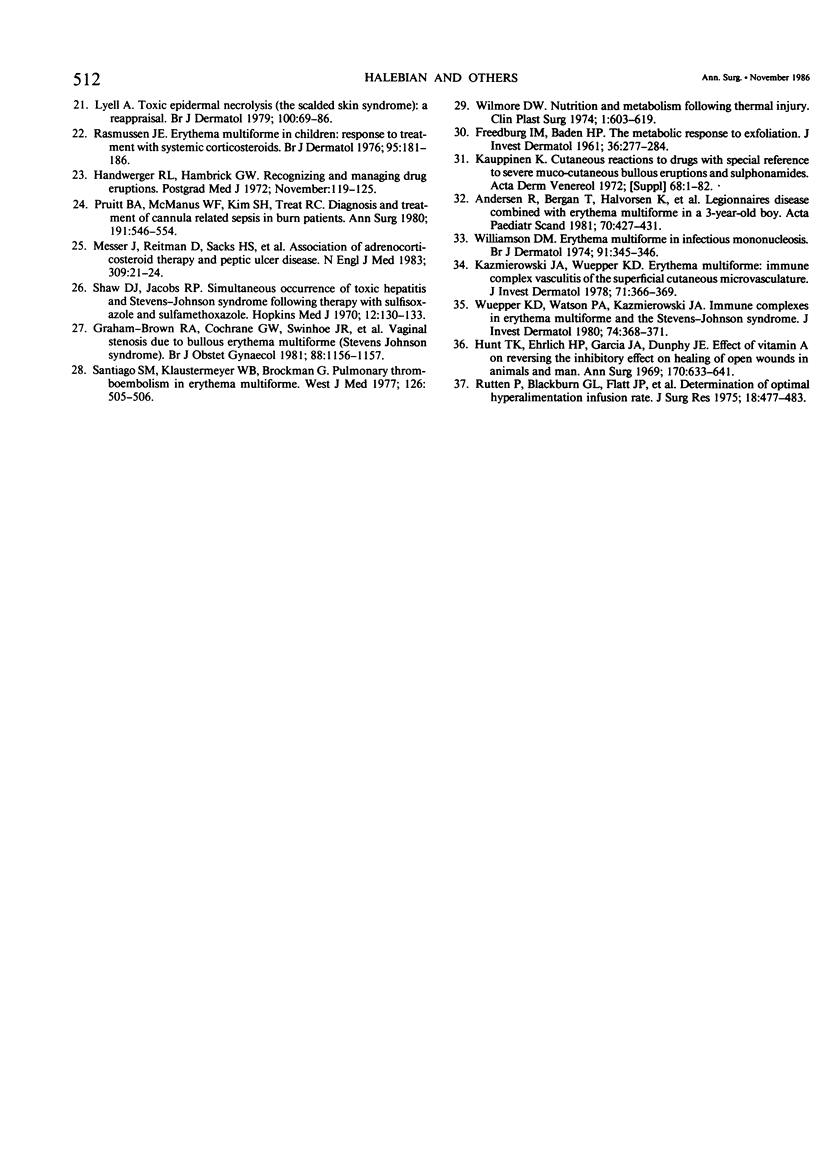
Images in this article
Selected References
These references are in PubMed. This may not be the complete list of references from this article.
- Andersen R., Bergan T., Halvorsen K., Kallings I., Orstavik I. Legionnaires' disease combined with erythema multiforme in a 3-year-old boy. Acta Paediatr Scand. 1981;70(3):427–430. doi: 10.1111/j.1651-2227.1981.tb16579.x. [DOI] [PubMed] [Google Scholar]
- Anhalt G., Snelling C. F. Toxic epidermal necrolysis. Case report. Plast Reconstr Surg. 1978 Jun;61(6):905–910. [PubMed] [Google Scholar]
- Assaad D., From L., Ricciatti D., Shapero H. Toxic epidermal necrolysis in Stevens--Johnson syndrome. Can Med Assoc J. 1978 Jan 21;118(2):154–156. [PMC free article] [PubMed] [Google Scholar]
- BJOERNBERG A., BJOERNBERG K., GISSLEN H. TOXIC EPIDERMAL NECROLYSIS WITH OPTHALMIC COMPLICATIONS. Acta Ophthalmol (Copenh) 1964;42:1084–1095. doi: 10.1111/j.1755-3768.1964.tb03675.x. [DOI] [PubMed] [Google Scholar]
- Björnberg A. Fifteen cases of toxic epidermal necrolysis (Lyell). Acta Derm Venereol. 1973;53(2):149–152. [PubMed] [Google Scholar]
- Daniels T. E., Quadra-White C. Direct immunofluorescence in oral mucosal disease: a diagnostic analysis of 130 cases. Oral Surg Oral Med Oral Pathol. 1981 Jan;51(1):38–47. doi: 10.1016/0030-4220(81)90124-9. [DOI] [PubMed] [Google Scholar]
- Demling R. H., Ellerbe S., Lowe N. J. Burn unit management of toxic epidermal necrolysis. Arch Surg. 1978 Jun;113(6):758–759. doi: 10.1001/archsurg.1978.01370180100019. [DOI] [PubMed] [Google Scholar]
- Finlay A. Y., Richards J., Holt P. J. Intensive therapy unit management of toxic epidermal necrolysis: practical aspects. Clin Exp Dermatol. 1982 Jan;7(1):55–60. doi: 10.1111/j.1365-2230.1982.tb02385.x. [DOI] [PubMed] [Google Scholar]
- Graham-Brown R. A., Cochrane G. W., Swinhoe J. R., Sarkany I., Epsztejn L. J. Vaginal stenosis due to bullous erythema multiforme (Stevens-Johnson syndrome). Case report. Br J Obstet Gynaecol. 1981 Nov;88(11):1156–1157. doi: 10.1111/j.1471-0528.1981.tb01772.x. [DOI] [PubMed] [Google Scholar]
- Handwerger R. L., Hambrick G. W., Jr Recognizing and managing drug eruptions. Postgrad Med. 1972 Nov;52(5):119–125. doi: 10.1080/00325481.1972.11713292. [DOI] [PubMed] [Google Scholar]
- Hunt T. K., Ehrlich H. P., Garcia J. A., Dunphy J. E. Effect of vitamin A on reversing the inhibitory effect of cortisone on healing of open wounds in animals and man. Ann Surg. 1969 Oct;170(4):633–641. doi: 10.1097/00000658-196910000-00014. [DOI] [PMC free article] [PubMed] [Google Scholar]
- Kazmierowski J. A., Wuepper K. D. Erythema multiforme: immune complex vasculitis of the superficial cutaneous microvasculature. J Invest Dermatol. 1978 Dec;71(6):366–369. doi: 10.1111/1523-1747.ep12556746. [DOI] [PubMed] [Google Scholar]
- LYELL A. Toxic epidermal necrolysis: an eruption resembling scalding of the skin. Br J Dermatol. 1956 Nov;68(11):355–361. doi: 10.1111/j.1365-2133.1956.tb12766.x. [DOI] [PubMed] [Google Scholar]
- Lyell A. Toxic epidermal necrolysis (the scalded skin syndrome): a reappraisal. Br J Dermatol. 1979 Jan;100(1):69–86. doi: 10.1111/j.1365-2133.1979.tb03571.x. [DOI] [PubMed] [Google Scholar]
- Marvin J. A., Heimbach D. M., Engrav L. H., Harnar T. J. Improved treatment of the Stevens-Johnson syndrome. Arch Surg. 1984 May;119(5):601–605. doi: 10.1001/archsurg.1984.01390170097019. [DOI] [PubMed] [Google Scholar]
- Messer J., Reitman D., Sacks H. S., Smith H., Jr, Chalmers T. C. Association of adrenocorticosteroid therapy and peptic-ulcer disease. N Engl J Med. 1983 Jul 7;309(1):21–24. doi: 10.1056/NEJM198307073090105. [DOI] [PubMed] [Google Scholar]
- Nathan M. D. Stevens-Johnson syndrome: Twenty-three cases and their otolaryngologic significance. Laryngoscope. 1975 Oct;85(10):1713–1724. doi: 10.1288/00005537-197510000-00013. [DOI] [PubMed] [Google Scholar]
- Ohlenschlaeger K. Toxic epidermal necrolysis and Stevens-Johnson's disease. Acta Derm Venereol. 1966;46(2):204–209. [PubMed] [Google Scholar]
- Pruitt B. A., Jr, McManus W. F., Kim S. H., Treat R. C. Diagnosis and treatment of cannula-related intravenous sepsis in burn patients. Ann Surg. 1980 May;191(5):546–554. doi: 10.1097/00000658-198005000-00005. [DOI] [PMC free article] [PubMed] [Google Scholar]
- Pullen H., Wright N., Murdoch J. M. Hypersensitivity reactions to antibacterial drugs in infectious mononucleosis. Lancet. 1967 Dec 2;2(7527):1176–1178. doi: 10.1016/s0140-6736(67)91893-4. [DOI] [PubMed] [Google Scholar]
- Rasmussen J. E. Erythema multiforme in children. Response to treatment with systemic corticosteroids. Br J Dermatol. 1976 Aug;95(2):181–186. doi: 10.1111/j.1365-2133.1976.tb00824.x. [DOI] [PubMed] [Google Scholar]
- Rasmussen J. Toxic epidermal necrolysis. Med Clin North Am. 1980 Sep;64(5):901–920. doi: 10.1016/s0025-7125(16)31573-5. [DOI] [PubMed] [Google Scholar]
- Rutten P., Blackburn G. L., Flatt J. P., Hallowell E., Cochran D. Determination of optimal hyperalimentation infusion rate. J Surg Res. 1975 May;18(5):477–483. doi: 10.1016/0022-4804(75)90121-3. [DOI] [PubMed] [Google Scholar]
- Santiago S. M., Jr, Klaustermeyer W. B., Brockman G. Pulmonary thromboembolism in erythema multiforme. West J Med. 1977 Jun;126(6):505–506. [PMC free article] [PubMed] [Google Scholar]
- Shaw D. J., Jacobs R. P. Simultaneous occurrence of toxic hepatitis and Stevens-Johnson syndrome following therapy with sulfisoxazole and sulfamethoxazole. Johns Hopkins Med J. 1970 Mar;126(3):130–133. [PubMed] [Google Scholar]
- Simons H. M. Acute life-threatening dermatologic disorders. Med Clin North Am. 1981 Jan;65(1):227–243. doi: 10.1016/s0025-7125(16)31550-4. [DOI] [PubMed] [Google Scholar]
- Williamson D. M. Erythema multiforme in infectious mononucleosis. Br J Dermatol. 1974 Sep;91(3):345–346. doi: 10.1111/j.1365-2133.1974.tb12905.x. [DOI] [PubMed] [Google Scholar]
- Wilmore D. W. Nutrition and metabolism following thermal injury. Clin Plast Surg. 1974 Oct;1(4):603–619. [PubMed] [Google Scholar]
- Wuepper K. D., Watson P. A., Kazmierowski J. A. Immune complexes in erythema multiforme and the Stevens-Johnson syndrome. J Invest Dermatol. 1980 May;74(5):368–371. doi: 10.1111/1523-1747.ep12543789. [DOI] [PubMed] [Google Scholar]






